MARIANI’S
September 16, 2007
NEWSLETTER
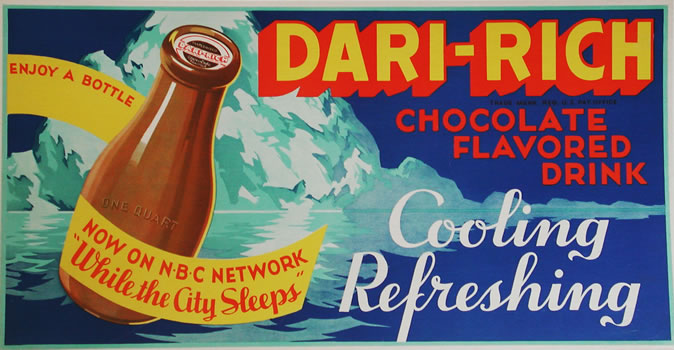
Dari-Rich Ad, circa 1958 (Artist unknown)
WEBSITE: To
go to my web site, in which I will update food
&
travel information and help link readers to other first-rate travel
& food sites, click on: home page
ARCHIVE: Readers may now access
an
Archive of all past newsletters--each annotated--dating back to July,
2003, by simply clicking on www.johnmariani.com/archive
SUBSCRIBE AND
UN-SUBSCRIBE: You may subscribe anyone you wish
to this newsletter--free of charge--by
clicking here.
In
This Issue
NEW YORK CORNER: INDOCHINE by John Mariani
NOTES FROM THE WINE CELLAR: The Red Wine Diet: A Book Review by John Mariani
QUICK BYTES
Our Favorite Mansions
Kingsbrae Arms
219
King Street
St. Andrews, New Brunswick
506-529-1897
www.kingsbrae.com
By Mort
Hochstein
On one typical evening, we enjoyed sturgeon, fresh and lightly smoked, nestled in a fennel salad, its licorice tones playing off a pungent, pale gray caviar sauce. The caviar and the sturgeon came from Canada’s first-ever sturgeon farm, just a few miles from the inn. Latulippe has been a major supporter of the aquafarming endeavor, which now supplies leading Canadian restaurants with smoked fish and caviar from the Atlantic short-nosed sturgeon, an otherwise endangered species in its natural habitat.
With it we enjoyed delicate lobster ravioli plated with organic shiitake mushrooms and a rich lobster ragoût. To complete the appetizer trio, Latulippe served organic greens grown by his wife Marina and picked from the garden that afternoon, mated with caramelized pears and embellished with Riesling wine vinaigrette. Wines are pre-selected for each course and our starters were accompanied by a crisp ’04 Kenwood Sauvignon Blanc.
A grand cru 2000 St. Émilion from Château Cantenac was chosen to complement our main plate, a nicely grilled chop of local wild boar paired with mashed new potatoes, made even more attractive by an eggplant onion sauce.
The dessert offerings that night featured local products and we had our choice of a maple sugar tart and buttermilk ice cream, a caramelized apple chocolate mousse topped by bourbon caramel sauce or one of Latulippe’s dessert specialties, a goat's cheese tart sharing a plate with stewed field strawberries and orange jelly.
This was one of our most memorable dining occasions, but it had been preceded a few nights earlier by an even more dramatic procession of products that originated in local farms and waters. Appetizers included a bright red tomato stuffed with a tangy tapenade and topped by roasted pepper and basil-infused oil; a seared Cobscook Bay crab cake, about 99 and 44/100ths pure crab served as a small pancake and set off by the bite of wasabi sauce, contrasting yin-and-yang with a and cheese-topped crêpe-wrapped white asparagus. The wine for this trio was a fruity and tart 2001 Grüner Veltliner from Schuckert Sunterra.
The main course that evening was a local halibut, with a red quinoa crust, accompanied by a smoked salmon and cucumber salad and couscous flavored by a mild, lemony-tanged sorrel sauce. We stayed white on the wine, enjoying a 2002 Meursault from Bouchard Père et Fils.
Every week, chef Latulippe sets forth a completely different menu each evening in a series of dazzling turns. Though you normally take three appetizers, a main course and dessert, the food is light and the portions generous, but not oversized, so you leave the table satisfied, never stuffed.
Latulippe’s five-course menu demonstrates artful restraint of a chef showing respect for the raw material in his kitchen, exercising a skillful light touch and allowing natural flavors to shine. “Food,” he says, "should taste like what it is. My job is to bring out the best in what nature provides.” An advocate of the slow food movement, Latulippe brings in his fish from nearby seas and lakes, while his free-range chicken, his Simmental cattle, and Pennfield lamb graze on Canadian farms.
The comfortable inn was once one of the cottages—similar to the grand cottages of Newport, Rhode Island—built for wealthy Canadians who summered off the Bay of Fundy.
Twelve years ago, a pair of New Yorkers, Harry Chancy and David Oxford, took on the task of turning a former sea captain’s home dating back to 1897, into a modern inn. They came to St. Andrews, a more relaxed fishing village and hideaway for Canadian notables, while still running a similar hostelry in the Hamptons on Long Island in New York and continued the New York –New Brunswick axis until 2003. Having enjoyed the pleasures and studied the potential of St. Andrews, they decided to put all their efforts into creating the kind of inn they would enjoy visiting at the Canadian site. The location, on a quiet street on hill overlooking the town, next door to a world-class, 27- acre horticultural garden, is the kind of site that innkeepers dream of finding.
The fishing village, while hardly Aspen, is a community in transition. A few years ago, a visiting executive from Dell computers in Texas grew enamored of the place, and became the first to pay more than a million dollars for a cottage on the heights overlooking the city and the bay. That sale was the impetus for a series of seven-figure transactions as others, Canadians and Americans began acquiring property in the community.
The visitor count to St. Andrews, fueled by its history as a refuge for British loyalists during the American revolution, its streets named after the children of King George III, the eponymous golf course, whale watching, sea kayaking , the dramatic tide reversal of the Bay of Fundy, and trekking along deep, verdant river valleys, is rising once again. On one recent weekend, all of Kingsbrae Arms was given over to a gathering of well-heeled Notre Dame Alumni, who arrived at nearby airports in a fleet of private jets.
Accommodations are luxury gone wild. There are three master bedroom suites, each with a separate sitting room and fireplace, each with sweeping views of the inn’s own gardens (above) and the ocean. Bedrooms offer king-sized four-poster draped canopy beds or four-poster queen- sized beds, period furniture and artwork from the 18th and 19th centuries, direct dial telephones and data ports, down comforters and pillows, and chocolate truffles at nightly turndowns. There’s a no-charge refrigerator and pantry with snacks and drinks available at all hours, super-modern showers and bathrooms with oversized cast iron tubs or whirlpools built for two.
St. Andrews is one hour from the international airport in Saint John, New Brunswick.
Rates: In-season modified American plan daily rates for two include full breakfast, dinner, pantry snacks, and VIP passes to adjoining Kingsbrae Gardens. Deluxe Queen Room, $585. Deluxe King Room, $685 both with fireplace and ocean view. Luxury one-bedroom suite with fireplace, tubs, ocean view balcony or garden patio, $835.
by John Mariani
 INDOCHINE
INDOCHINE430 Lafayette Street
212-505-5111
indochinenyc.com
In its ambiance Indochine still retains that reverie, and, despite so many years in business, the decor of framed mirrored walls, leather banquettes, white tiled floors, and palm print wallpaper is still very beautiful. Right from the start, in 1984, Indochine attracted a fashionable and celebrity crowd that endures to this day, so that the local press still pops a flash at the stars who have premier and post-theater parties here. Apparently they can hold parties
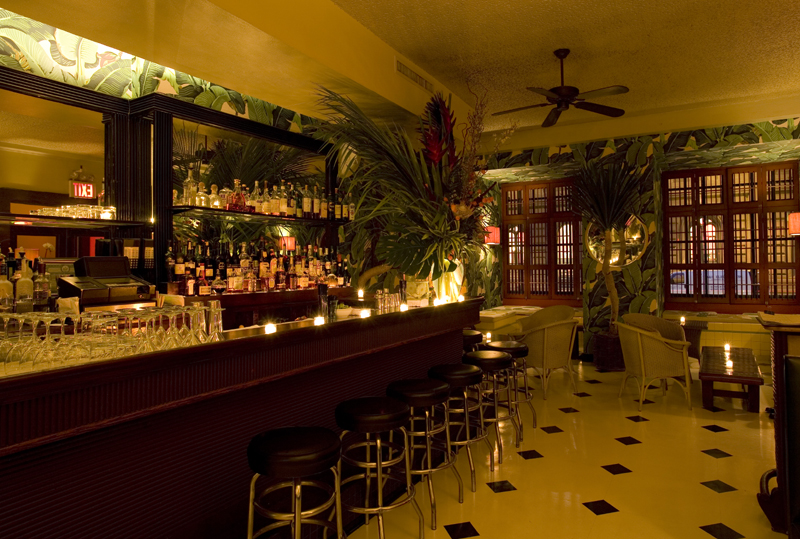 for 200. The bar (below)
has a
definite
swank to it, and the lighting, though it can get too low, is quite
romantic early on. What is not
romantic is the noise level of bombastic,
decidedly not Vietnamese
music, that makes conversation all but
impossible after 9 PM. Too bad, because the waitstaff is a
cheery, congenial bunch; too bad you can't hear what they're saying.
for 200. The bar (below)
has a
definite
swank to it, and the lighting, though it can get too low, is quite
romantic early on. What is not
romantic is the noise level of bombastic,
decidedly not Vietnamese
music, that makes conversation all but
impossible after 9 PM. Too bad, because the waitstaff is a
cheery, congenial bunch; too bad you can't hear what they're saying.As in so many Asian restaurants, the appetizers are the best items on the menu, and you can choose just about anything among soups, cold and hot starters, salads, and vegetarian dishes and share them with the table, though one dish will really only feed two people as a starter. Still, the prices are not high--$8-$15--so you can order a wide assortment and eat pretty heartily. I'd definitely recommend the Asian lump crab cakes with watercress-ginger sauce and the grilled eggplant with lime juice, ginger, and sesame dressing. The only trouble with the steamed Vietnamese ravioli--delicate wrappers containing chicken, shrimp, bean sprouts, mushrooms, and fried shallots--is that you'll want to make a meal out of them all by yourself. I also liked the crispy shrimp stuffed with asparagus and shiitakes with a pimento-plum sauce. Baby back ribs with an Asian spice rub have been a perennial favorite here, and it's easy to taste why; nevertheless, make sure the kitchen sends them out at a hot temperature; ours tasted re-heated.
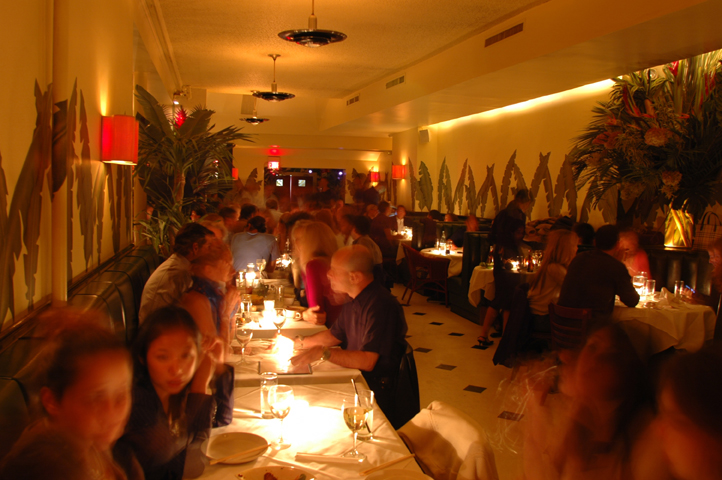 As
noted, entrees are not quite as delectable as what precedes them, but
you won't have any trouble enjoying glazed duck breast with bok choi
in a baked Vidalia onion broth. By all means order a side dish or two
of sticky rice, which is addictive. Also good was a crispy whole
red snapper with sautéed fennel and a spicy sweet-sour pimento
sauce,
but a filet of sole with coconut milk and lime leaves, steamed in a
banana leaf, was a very tame dish indeed. So, too, chicken breast
stuffed with shiitakes, and served in coconut milk scented with kaffir
lime leaves, with water spinach and lotus root chips didn't taste
particularly Asian or French. A special one evening of hanger
steak was closer to the French mark.
As
noted, entrees are not quite as delectable as what precedes them, but
you won't have any trouble enjoying glazed duck breast with bok choi
in a baked Vidalia onion broth. By all means order a side dish or two
of sticky rice, which is addictive. Also good was a crispy whole
red snapper with sautéed fennel and a spicy sweet-sour pimento
sauce,
but a filet of sole with coconut milk and lime leaves, steamed in a
banana leaf, was a very tame dish indeed. So, too, chicken breast
stuffed with shiitakes, and served in coconut milk scented with kaffir
lime leaves, with water spinach and lotus root chips didn't taste
particularly Asian or French. A special one evening of hanger
steak was closer to the French mark.As are the desserts, although the roasted banana wrapped in sweet rice with coconut milk tapioca was a delightful sweet, and the Asian pear wontons with four dipping sauces fun to eat. More traditionally French was a coconut creme brûlée and a luscious hazelnut mousse cake with walnut crust and chocolate sauce. Don't fail to end off with Vietnamese iced coffee.
Indochine has endured because it's been consistent, both in its food and its its decor. Now if they can just turn down the music, it will be all the more appealing to those who want good Vietnamese food and enjoy conversation with their friends.
Indochine is open nightly for dinner. Appetizers run $8-$15, main courses $20-$28.
NOTES FROM THE WINE CELLAR
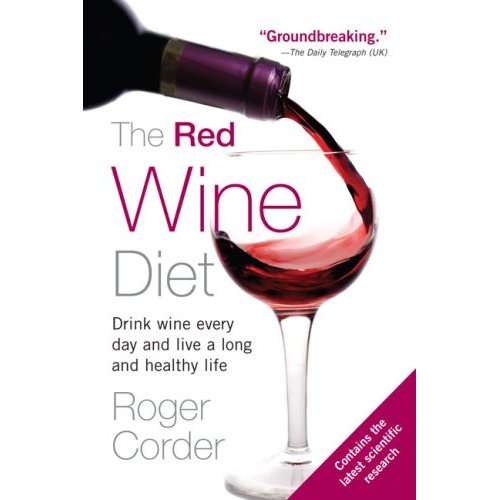 A Glass of
Red Wine a Day May Keep the Doctor Away
A Glass of
Red Wine a Day May Keep the Doctor Away
Back in 1954 a book called The Drinking Man's Diet: How to Lose Weight with a Minimum of Willpower contended that a good weight loss program should include a regular two-martini lunch with steak and Béarnaise sauce. The book sold 2,400,000 copies in 13 languages.
Now comes The Red Wine Diet by Roger Corder (Avery, $15.95), which insists drinking red wine regularly is good for just about everything that might otherwise ail you, including heart disease, diabetes, even dementia.
The book is an outgrowth of a 2006 article in Nature Magazine by Corder, 51, a cardiovascular expert and professor of therapeutics at
Corder insists there is so little resveratrol in wine that you would have to drink hundreds of liters of wine per day to get any benefit, while a nice half-bottle (375 ml) a day gives you all the procyanidins you need for the same effect. That’s about three generous glasses, though two will do the trick for women.
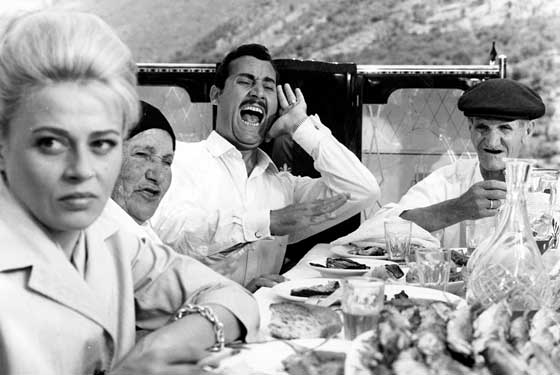
Many of his findings come from a research trip to
He also reports on two small Northern Italian villages, Crevalcore and Montegiorgio, where 97 percent of the men drink wine only, mostly red; Non-smokers had the highest life expectancy, while “sedentary men who did not drink or only drank occasionally had the lowest life expectancy, six years less than those drinking a bottle of wine a day.” Corder notes that tannins derived from oak aging in barrel do nothing to improve health, and he contends that as wines age procyanidins decrease in the bottle, but not significantly until ten years or older. So drink up your old
Despite the arcane chemistry of the subject, Corder manages to make sense of why we should all be drinking wine on a daily basis—not bingeing--while never cutting out good foods. Indeed, without a healthy diet, no amount of procyanidin will improve your medical prospects. Wine, he insists, is but one of the elements of a moderate lifestyle that should include “a mix of foods for their carbohydrate, fat, [and] protein content.” Happily these include procyanidin-rich chocolate made by a new process pioneered by Mars in the 1990s. Corder recommends one ounce a day.
The meat of the book is in Corder’s extensive use of the most up-to-date, as well as historic, research on wine and health. He begins by citing 5th century B.C. Greek physician Hippocrates, who used wine as an antiseptic, diuretic, and sedative. While acknowledging the destructive effects of alcohol abuse on society, Corder shows how, in the 20th century, American physicians risked controversy if they advocated the health benefits of wine. So when French scientist Serge Rénaud appeared on TV’s “Sixty Minutes” in 1991 to expound on The French Paradox, the news, says Corder, “shook
He then discusses which wines, like tannat, are the most beneficial, even the point of recommending specific bottlings—awarded one to five heart symbols--like the Malbec Riserva from Altos Las Hormigas from Argentina, Chateau Montaiguillon and especially those French wines made with tannat grapes in Madiran. The best American wines rated are Robert Mondavi Napa Valley Reserve from California and Washington State’s Matthew Cellars Red.
The later chapters contain a very sensible two-week sample menu plan followed by 50 pages of recipes.
Corder’s book is a much needed and comprehensive update of the research on a subject not treated in depth since To Your Health: Two Physicians Explore the Health Benefits of Wine by David M. Whitten and Martin R. Lipp, 13 years ago.
For a confirmed winedrinker The Red Wine Diet is an easy book to love, one you want to shake at your teetotaling friends who still believe any and all alcohol consumption is cause for all sorts of maladies and social ills. If Corder had his way, he would print wine’s health benefits right on the label: “I see no reason why in the future it should not be a legal requirement to include a statement of procyanidin content. . . [and] I predict that sooner or later we will be told exactly which healthful benefits we can expect from a glass of wine.”
I’ll drink to that.

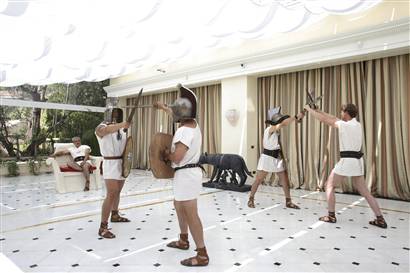
HEY, YOUR SANDAL'S UNTIED!
The Rome Cavalieri Hilton has launched a new “gladiator training program,” a two-hour mortal combat fitness class taught by members of the Gruppo Storico Romano, an historical reenactment group that runs a “gladiator training” academy in the
QUICK BYTES
* On Sept. 21 in NYC Morton’s The Steakhouse will host an evening of 4 sparkling wines from Domaine Chandon of
* On Sept. 24 in
* On Sept 26 Bijoux Restaurant in
* On Sept. 27 Chef Shaun Doty will host a Georgia Harvest dinner at Shaun's restaurant in
* On Sept. 27 at the Puck Building The Joy of Sake comes to NYC for the fourth time, this year featuring 300 sakes, many not otherwise available in the U.S. NYC restaurants incl. Nobu, Megu, wd-50, Geisha, 15 East, SushiSamba, and more will serve dishes to accompany the sakes.
* ENO wine room, located at The Ritz-Carlton Laguna Niguel, now holds regular "ENO-versity" classes, a series of wine, cheese and chocolate
* On Oct. 5 & 6, the first annual Talbot International Food & Wine Festival of Easton, Maryland, will be held, with 6 restaurants will representing 6 countries to showcase each country's cuisine and wine, incl. The
* To celebrate the 7th Annual Pushkin Golden Autumn Ball on Oct. 13 in St. Petersburg,
* On Oct. 17 in
* In
or call 707-255-2332.
Everett Potter's Travel Report:
Tennis Resorts Online: A Critical Guide to the World's Best Tennis Resorts and Tennis Camps, published by ROGER COX, who has spent more than two decades writing about tennis travel, including a 17-year stretch for Tennis magazine. He has also written for Arthur Frommer's Budget Travel, New York Magazine, Travel & Leisure, Esquire, Money, USTA Magazine, Men's Journal, and The Robb Report. He has authored two books-The World's Best Tennis Vacations (Stephen Greene Press/Viking Penguin, 1990) and The Best Places to Stay in the Rockies (Houghton Mifflin, 1992 & 1994), and the Melbourne (Australia) chapter to the Wall Street Journal Business Guide to Cities of the Pacific Rim (Fodor's Travel Guides, 1991). Click on the logo below to go to the site.
~~~~~~~~~~~~~~~~~~~~~~~~~~~~~~~~~~~~~~~~~~~~~~~~~~~~~~~~~~~~~~~~~~~~~~~~~
MARIANI'S VIRTUAL GOURMET NEWSLETTER is published weekly. Editor/Publisher:
John Mariani. Contributing Writers: Robert Mariani, Naomi
Kooker, Kirsten Skogerson, Edward Brivio, Mort
Hochstein, Suzanne Wright. Contributing
Photographers: Galina Stepanoff-Dargery, Bobby Pirillo. Technical
Advisor: Gerry McLoughlin.
Any of John Mariani's books below
may be ordered from amazon.com by clicking on the cover image.
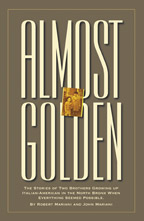 My
newest book, written with my brother Robert Mariani, is a memoir of our
years growing up in the My
newest book, written with my brother Robert Mariani, is a memoir of our
years growing up in the For those of you who don't think of the Robert and I think you'll enjoy this very personal look at our --John Mariani |
 |
 |
 |
 |
 |
 |
copyright John Mariani 2007

